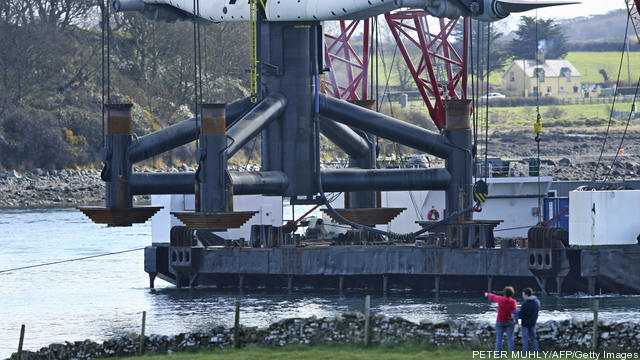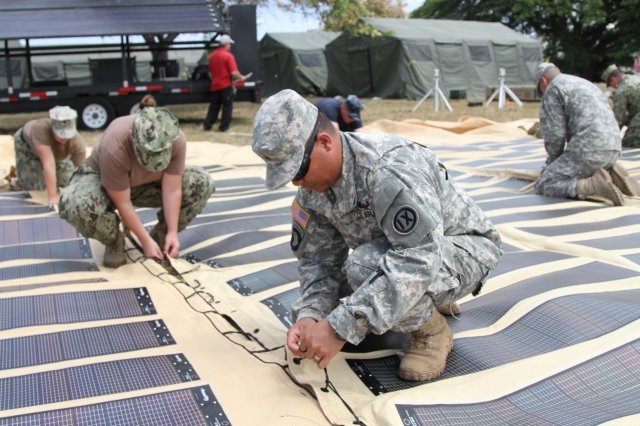As with any major change, the shift from military to civilian life can be challenging. Those who have served for years may miss the structure of day-to-day military life, and it can be difficult to determine what civilian career prospects are best for the skills acquired during military service. Now, for service members interested in… Keep reading →
Navy
Training Veterans for Careers in Clean Energy
By U.S. Department of EnergySign up and get Breaking Energy news in your inbox.
We will never sell or share your information without your consent. See our privacy policy.
Tidal energy and telecoms are proving testy neighbors in the Pacific Northwest.
The Federal Energy Regulatory Commission (FERC) is trying to broker a peace between Snohomish Public Utility District, which wants to install the first tidal energy turbines on the West Coast, and PC Landing, which operates a major telecommunication cable between Washington State and Japan. Keep reading →

The Navy’s push to become a more environmentally-friendly fighting force took a beating on Capitol Hill last week. But the tongue lashing delivered by House defense lawmakers has little chance of gaining traction on the Hill or inside the Pentagon, analysts say. House Armed Services Seapower subcommittee member Randy Forbes took Navy Secretary Ray Mabus to task, slamming the service’s continued investment in alternative fuels, one of Mabus’ top priorities for the service. “I understand that alternative fuels may help our guys in the field, but wouldn’t you agree that the thing they’d be more concerned about is having more ships, more planes, more prepositioned stocks,” Forbes said during the Friday hearing. “Shouldn’t we refocus our priorities and make those things our priorities instead of advancing a biofuels market?”

When the surf’s up on the New Jersey coast, U.S. Navy officials are stoked. The waves are helping the Navy harness the power of the ocean to generate electricity for a sea-based radar and communications system that supports maritime security operations. The Navy and Ocean Power Technologies Inc. recently completed successful testing of an autonomous buoy, called the PowerBuoy. The PowerBuoy taps the almost constant wave action on the ocean’s surface to produce the electricity that runs an on-board radar and communications payload.

You can add green building advocates to the list of people who have a gripe with the National Defense Authorization Act, which President Barack Obama signed into law on New Year’s Eve (despite his own reservations). The US Department of Defense (DOD) funding bill has come under scathing criticism from civil liberties and human rights organizations for its provisions concerning the detention of military combatants, but it also contains a provision that makes it more complicated – although not impossible – for the military to pursue high-level LEED certifications for its buildings.
As noted by the Federal Times, a section of the law states, “No funds authorized to be appropriated by this Act or otherwise made available for the Department of Defense for fiscal year 2012 may be obligated or expended for achieving any LEED gold or platinum certification.” But a clause to that provision does allow such certifications “if achieving such certification imposes no additional cost to the Department of Defense.” And the U.S. Green Building Council (USGBC), which runs the LEED programs, thinks that’s a loophole the military can drive a Humvee through, albeit with some careful navigation. Keep reading →

